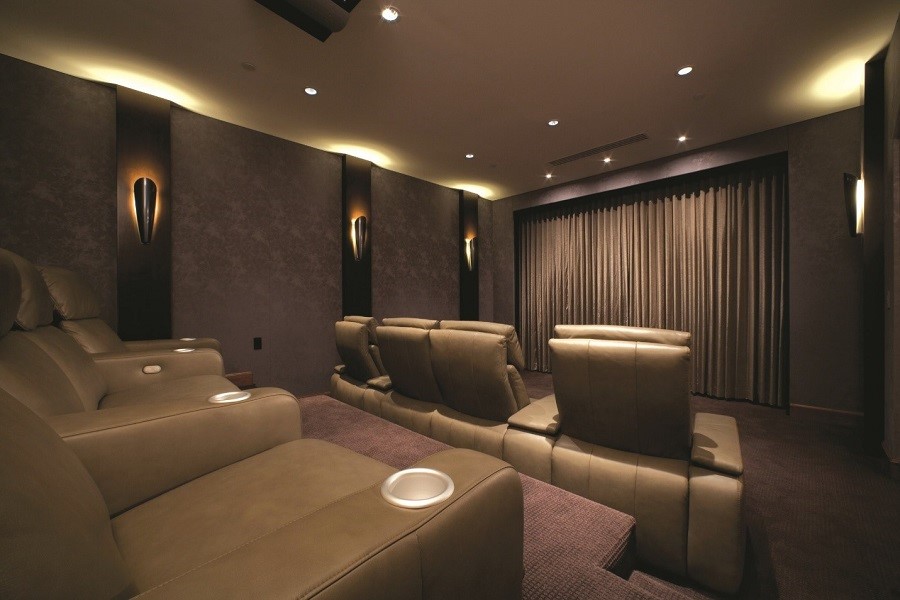What You’ll Need to Get Started on Your Home Theater Installation
The Right AV Is Just the Beginning

Love movie? Want to watch football games with the sharpest clarity and best sound? This may sound like some bad ad copy, but it’s actually all possible with a customized home theater installation in your Asheville property. From a booming surround sound system to the crispest picture clarity, a dedicated theater is the dream of plenty of homeowners. But designing the perfect one is about more than just plugging in a 4K projector and shoddy speakers. You need an entire room customized to your needs. In this blog, we’ll show you where to start.
Seating
Theater seating is one of the most important aspects of design. Not only do seats keep you comfortable, but they’re also among the first decisions you want to make before choosing any other components. Where you place the seats will determine how big your screen should be and also where you place your surround sound speakers.
Customized theater seating is important because it’s specifically designed to keep your back straight without impeding the soundwaves from reaching your ears. Plus, their inherent plushness does more than just keep you cozy – it can also help reduce echo, which makes your system sound fuller and more robust.
Screen and Projector
Plenty of people define the difference between a media room and home theater by the presence of a screen and projector. Media rooms usually sport TV displays, while custom theaters go the more traditional route. While this isn’t exactly accurate – TVs have become so large an advanced in image quality that they are sometimes featured to great effect in home theaters – projectors still give us an old-fashioned sense of what a theater should be.
When you choose a screen and projector combination, there are a few considerations you should make. First, how loud is the projector itself? You may not have to turn the surround sound up to overcome the droning of a TV fan, but if you make the wrong decision a projector can distract easily. Choose a liquid-cooled model that keeps the system running smoothly without all the noise.
Second, genuinely consider the conditions of the space before you choose a screen. If there’s a lot of ambient light, say from a windows in the upper walls of the basement or if you’re setting up a man cave in the garage, you may want to choose a high-contrast gray or black screen instead of the traditional white.
Sound System
Surround sound has made some serious advancements in the past few years. Today’s systems aren’t restricted to the channel-based models of yesteryear. They’re able to completely immerse you in the soundscape of your movie or TV show, even when you’re in a small space.
For years surround sound has been limited by space. Essentially, a large commercial theater containing 60 speaker channels would almost inherently sound better than a home theater with five. However, thanks to advances like Dolby Atmos, each sound is treated like an individual object, and mixers can move it across a range of channels, similar to the way an object moves across the screen. That means you can obtain full surround sound quality even in your private home theater.
Are you ready to enjoy the best sights and sounds of the cinema with a custom home theater installation? Contact us today!


